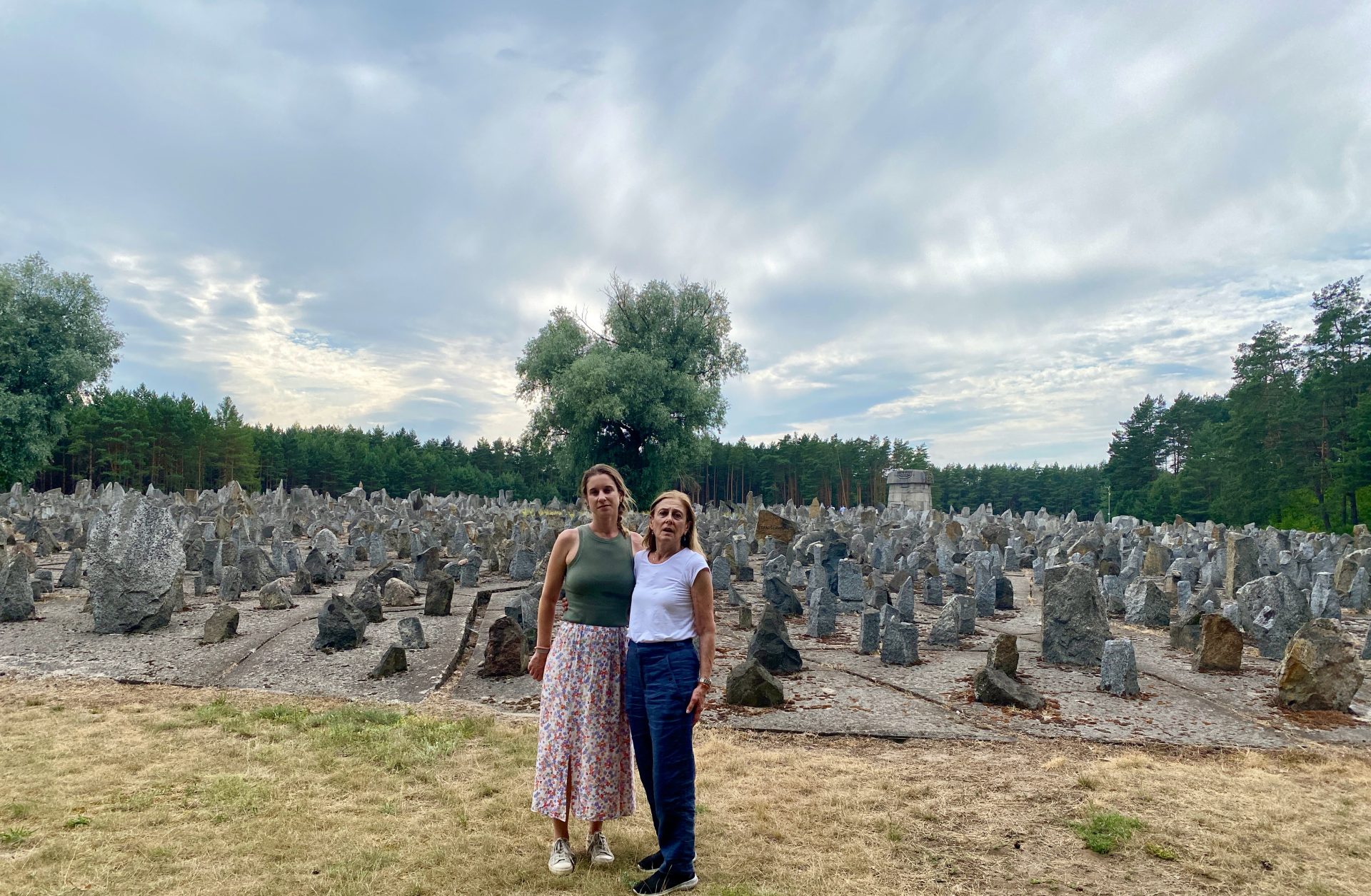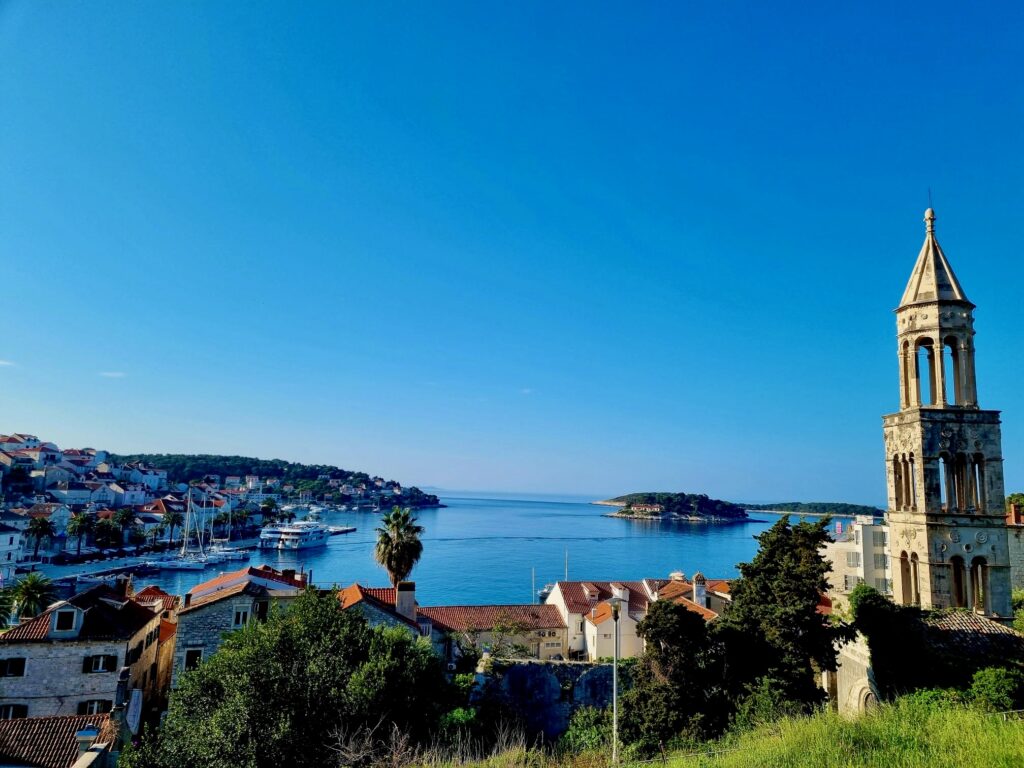One of the reasons for beginning our summer travels in Poland was to attempt to trace back my maternal grandparents and their families’ experience during the Holocaust. Though I’d grown up listening to scattered stories and memories from my grandfather Abe (zaydee in Yiddish) about his harrowing experience during the war (my bubbe – grandmother – Mina almost never spoke directly to me about hers), I knew he never wanted to go back to Poland: there was just too much pain, suffering, anger, and resentment.
But for me as a “3G” (the third generation, or grandchild of Holocaust survivors), this family history has shaped so much of who I am in various ways. Though every 3G’s experience is unique, I’ve identified with others who’ve described feeling an underlying pressure or burden to live for those who did not survive, an enhanced seriousness in orientation to a damaged world, yet possessing a drive to make our lives meaningful and impactful as Jews still attempting to “repair the world” through tikkun olam. I recently read Rachael Cerrotti’s moving memoir, We Share the Same Sky, about her journey following her grandmother’s war-time survival and its aftermath, and really identified with the sentiment of turning pain into responsibility (though her grandmother’s story and post-war experience was vastly different than my grandparents’). My mother, a child born of these traumatized survivors after they resettled in the US, has also devoted much of her personal and professional life to studying, researching, and attempting to extract lessons from the diverse inter-generational experiences of Holocaust survivors and their families through her volunteer work with the Transcending Trauma Project and Shoah Foundation interviewing survivors and their families, as well as co-editing a 2013 book, Narrative Reflections: How Witnessing Their Stories Changed Our Lives.
Though this is not a history blog, it might be helpful for some blog readers to understand a little background about Poland and the Holocaust. Pre-WWII, 3.5 million Jews lived in Poland. Yet 4.5 million of the six million Jews killed in the Holocaust were murdered in Poland, transported from other European countries to the notorious ghettos, labor and concentration camps, and mass extermination camps. Why Poland? It was centrally located, with numerous rail lines connected to other countries, vast and remote, and with the occupation farther from Western European centers, it was easier to hide the scale of the crimes committed. In total, nine out of 10 Polish Jews were murdered; only 300,000 Polish Jews survived and even the post-war period of governing communism was repressive, intolerant, and in fact later forced more Jews to leave the country.
Auschwitz
Located about an hour and 15 minutes’ drive west of Krakow, Auschwitz (the Nazis changed the name of the town from the Polish name, Oświęcim) is now a massive, multi-site museum and memorial. We planned in advance to have a babysitter and get tickets for a three-hour guided tour, which is recommended given the scale of the sites. Much is intact and preserved because it was liberated by the Red Army in January 1945, unlike other concentration camps further west in Germany which the Nazis had more time to destroy prior to the Allies’ liberation. It became a museum in 1947, decades earlier than Dachau which we visited last year; perhaps this is because Poles were the first prisoners here before it became an extermination camp for Jews, and thus also viewed themselves as victims of the Nazis. Given the earlier liberation, more of the buildings, including gas chambers, crematoriums, and torture cells, survived as well as what the Nazis collected from those sent to die there: mountains of children’s shoes and clothing, suitcases, prosthetics, eyeglasses, human hair. It’s one thing to read about what’s there; it’s another to see it with your own eyes, which can’t help brimming with tears at the terror and horror of it all. Our guide was knowledgeable and thorough, our English-speaking group filled with visitors from around the world. Everyone seemed quite stricken and even numb by what they were seeing. This was one situation where there really were no words.
Visiting Auschwitz was very intense, emotionally overwhelming, and exhausting, but also felt meaningful to bear witness to what remains to tell the world of this place.
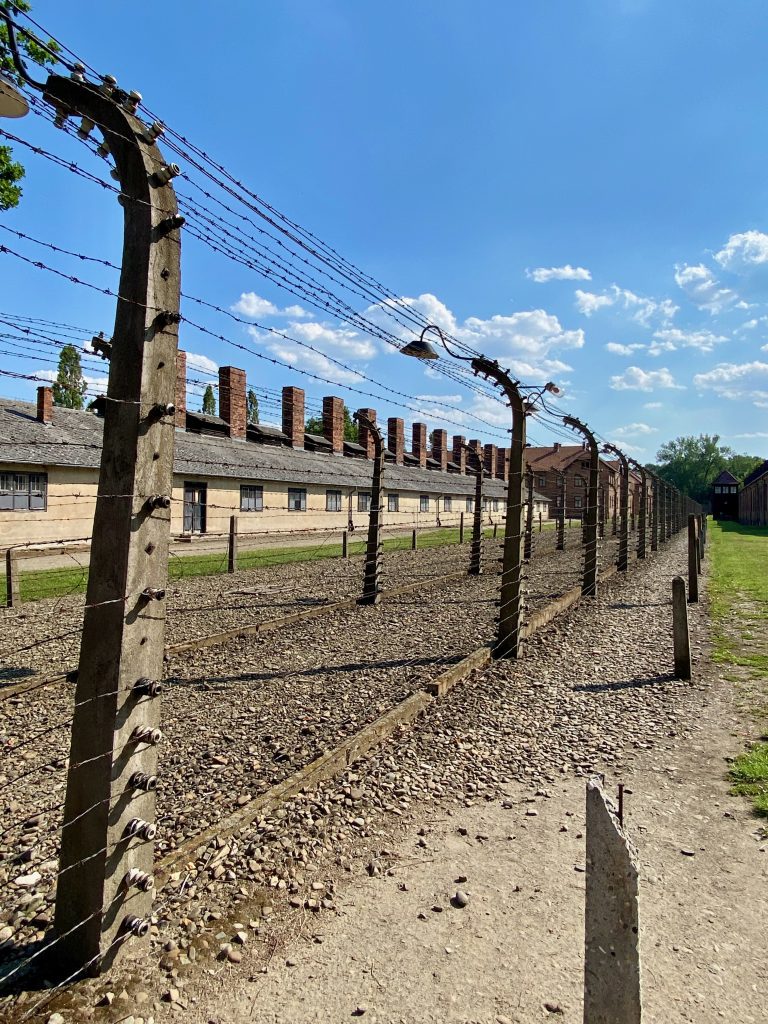

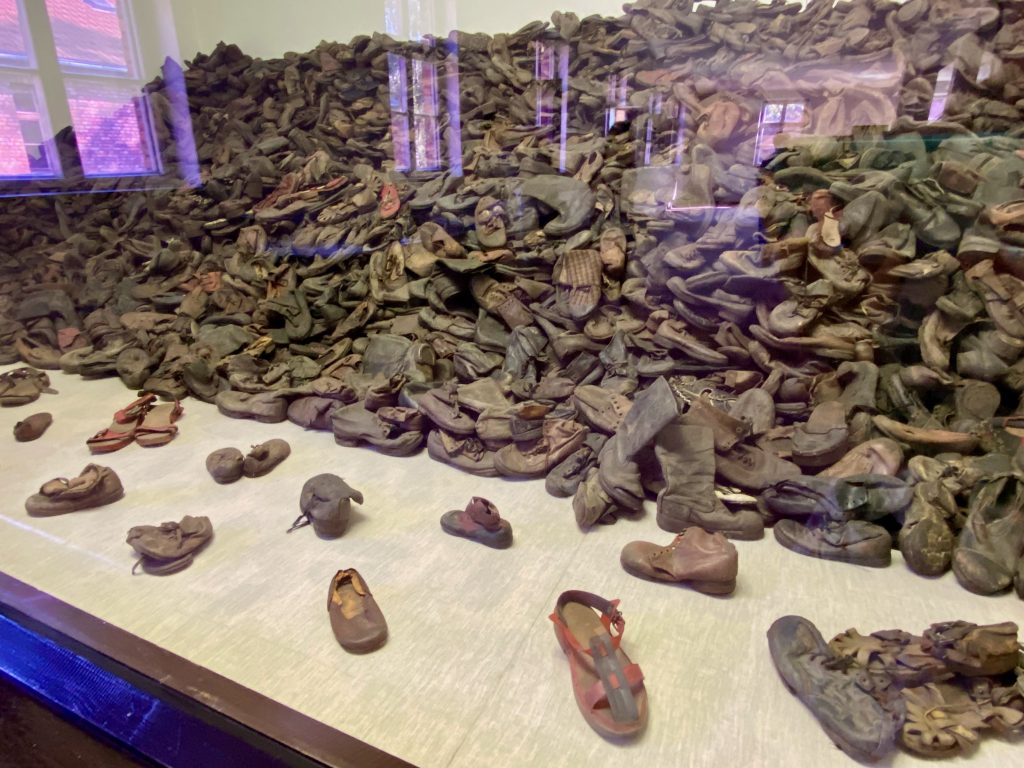

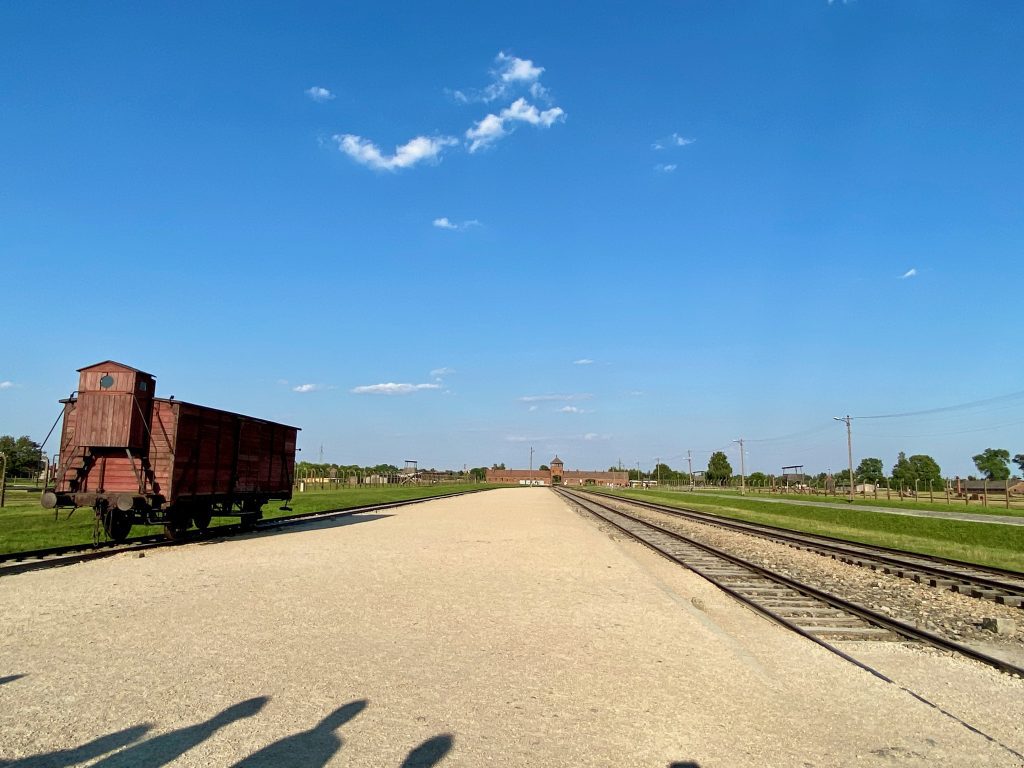

Krakow’s Jewish Quarter and Former Ghetto (Kazimierz)
Krakow’s Jewish Quarter (Kazimierz) was a vibrant neighborhood where Jews and Christians lived for centuries, as Poland was generally, relatively speaking, a more tolerant place for Jews until the 1930s. In Ghetto Heroes’ Square, we viewed the 68 chairs symbolizing the 68,000 Jews murdered in Krakow (25% of its population), but also a testament to the Jewish Underground Resistance movement. Poland was the only country in occupied Europe where assisting Jews was punishable by death, so resistance was even more harrowing here and thus marginal; yet many primarily young people participated. The Oskar Schindler Museum, located at his former enamel factory, focuses chiefly on the occupation period with one room about Schindler’s complicated background, wartime operations, and how he eventually came to save the 1,200 Jews and Poles whom he employed. My grandfather Abe worked with a well-known cantor, Moshe Taube, who was a teenage worker at Schindler’s factory and survived the war along with his father. Every Thanksgiving when we went to Pittsburgh for Thanksgiving, we’d attend Friday night Shabbat services which Abe led and where Moshe would sing the Kiddush over the wine (or grape juice for the kids). I was moved to find Moshe Taube’s photo along with the other Schindler’s List survivors displayed at the museum.
Jacob was a real trooper as we visited the Jewish Quarter, Schindler Museum, and many other historical sites. He’s very inquisitive and curious, which made us reflect more as parents about how best to respond to his questions about why we were here and what happened here, and what was age-appropriate. We tried to focus more on the helpers, like Jan Karski, a member of the Polish underground army and one of the first to present credible evidence of the Third Reich’s extermination of Europe’s Jews (which largely fell on deaf ears at the time). There were also sections of the Schindler Museum with more interactive elements, though I still wouldn’t recommend bringing young children if you want to have the time and focus to go through all the exhibits thoroughly.


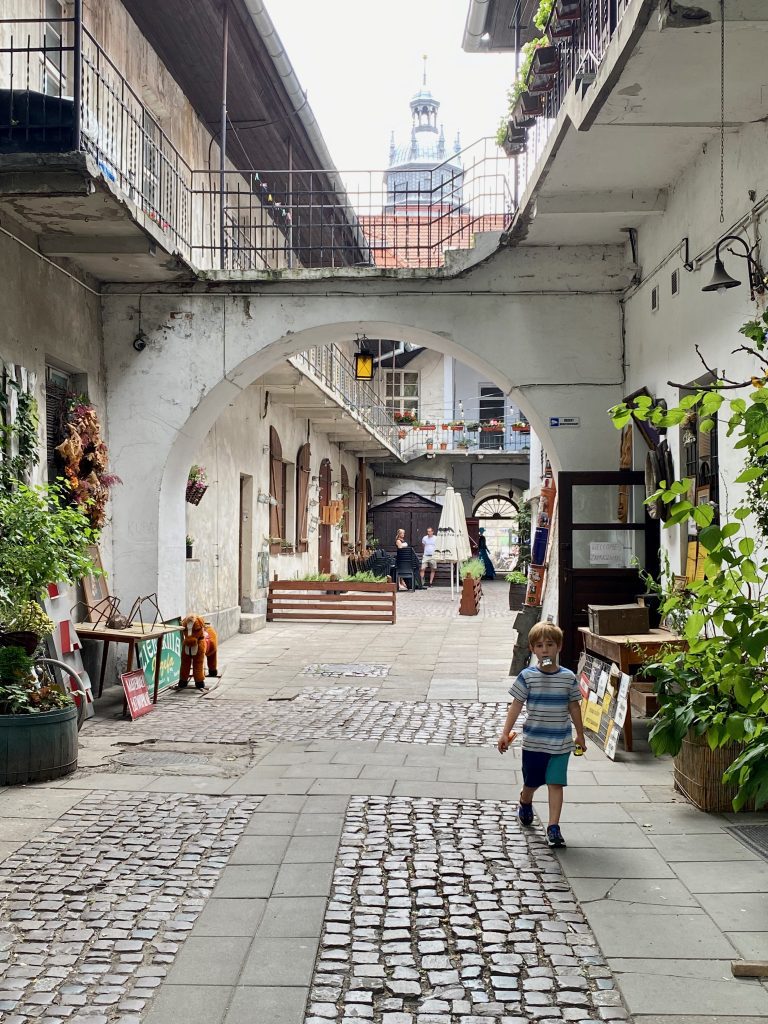
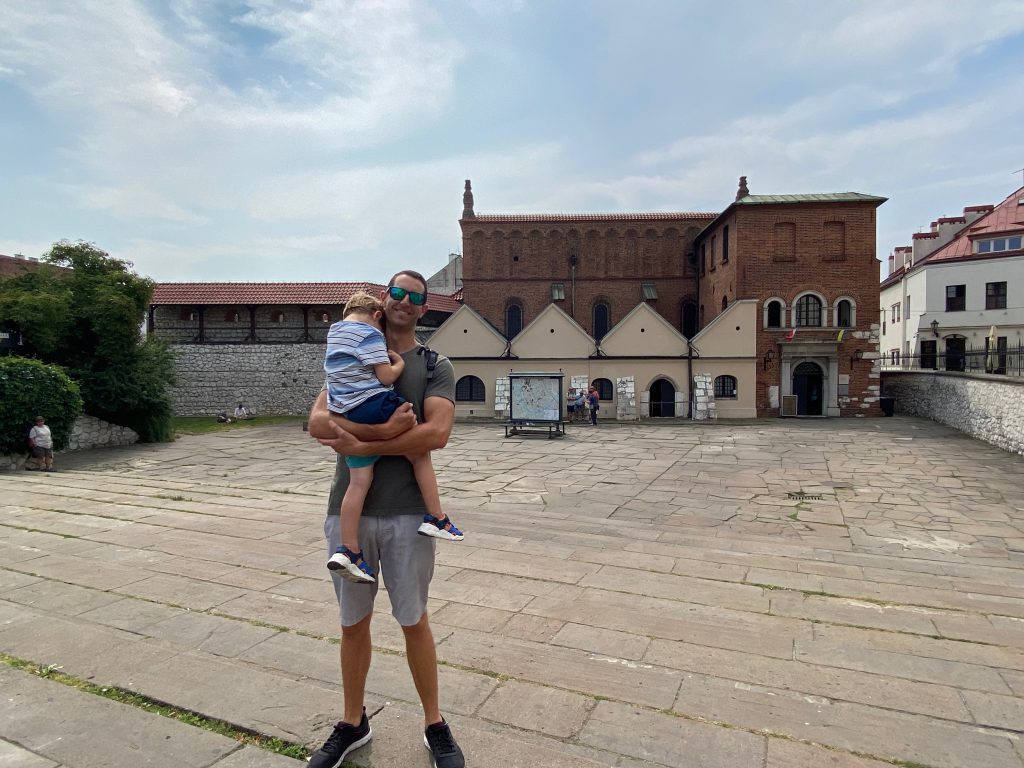
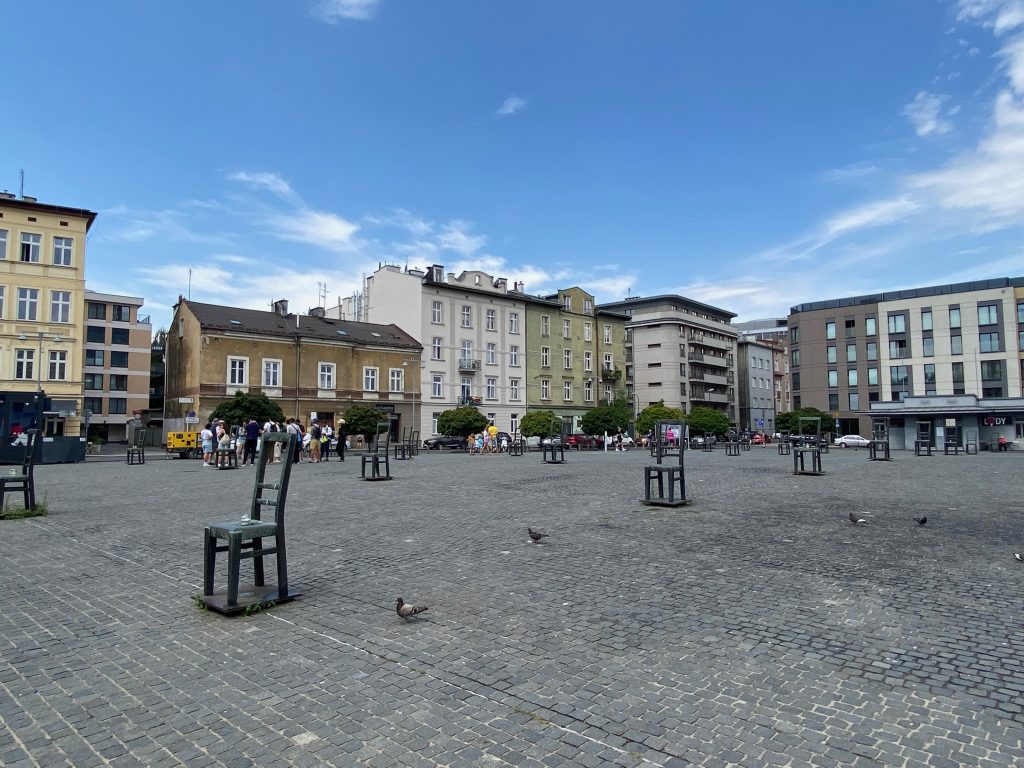

Treblinka
Well, it was a journey to get here in more ways than one. The morning of our visit to Treblinka, the babysitter I had confirmed failed to show up or respond to any messages. This threw a wrench in our plans as Dave (the only one of us with an international driver’s license) had planned to drive our rental car for the day, and the rental car company would not rent me or my mother the car without that license. We had missed the hourly train and were close to missing our scheduled tour, so the only option was for Dave to remain with Jacob and for my mom and me to take an Uber on a 1.5-hour drive from Warsaw northeast to a very rural, remote area. The Uber driver, who didn’t speak any English, must have been mystified but was probably thrilled at the fare earned.
Compared to Auschwitz, Treblinka receives far fewer visitors, even though comparable numbers were killed here. Our tour guide, Pawel, who grew up in the same nearby town some of our relatives did (Kosów Lacki), was extremely knowledgeable, somber, and sensitive to our visit, as we explained that Abe’s family and relatives were murdered at Treblinka. Strangely, in the small museum we noticed testimony from a survivor named Samuel Rajzman (pronounced “Raizman” as in my family’s name). Though we know the Raizmans on my father’s side came to the US from Russia in an earlier wave of migration, we wished Dad could have been here with us, as he would have been so curious about the name’s similarity.
Treblinka, one of three death camps along with Belzec and Sobibor (which were all commenced under Operation Reinhard, the German’s secret plan to exterminate Jews in occupied Poland), had only one purpose: to kill as many Jews as possible in the most efficient way possible. It was set up in spring 1942 next to a preexisting labor camp under the same name, and over 16 months it murdered 900,000 people (only 120 survived, after an escape attempt). Once it accomplished its mission, the camp was liquidated and destroyed in fall 1943, which explains why so little remains as compared with camps which were liberated at the end of the war; even the train tracks were destroyed, so there are large boulders as markers where they used to be leading into the camp.
There are 17,000 stones, symbolizing the numbers killed in a given day during Treblinka’s operation, on the former grounds near the carbon monoxide-fueled gas chambers and pits where bodies were dumped or where some were executed (and later burned to hide the evidence of the crimes). Unlike at other camps where the Nazis kept detailed records and documents, we do not know the names of so many of the victims. Instead, the stones list the names of towns and cities from which Jews were deported to Treblinka. With Pawel’s assistance, we found the stone for Wegrov (pronounced “Vengrove”), where Abe and his family lived. Abe’s parents, five siblings, and many other relatives were killed at Treblinka; he was the only survivor, along with his aunt, Esther (the grandmother of my cousin Mike). We placed our own stones there, as is the Jewish custom when visiting a gravesite, and just stood in silence and tears, the only visitors at that moment other than the shining sun and strong breeze. I could tell that for my mom, the physical and emotional journey to get to this place of visiting Treblinka was quite complicated, but it felt significant to be able to be here together.
What did it feel like to visit Treblinka? I don’t know how to explain it more than to say it feels like a part of me. Having my feet on the ground there felt part of a distant memory. I felt less numb and stricken than I did at Auschwitz, and more connected emotionally to the gravity and weight of the history.
Unfortunately, not having our own car that day limited our ability to visit Kosów Lacki and Wegrov where our relatives were from, as we had to then call the only taxi in town back to the train station to return us to Warsaw, but at least we still made it.
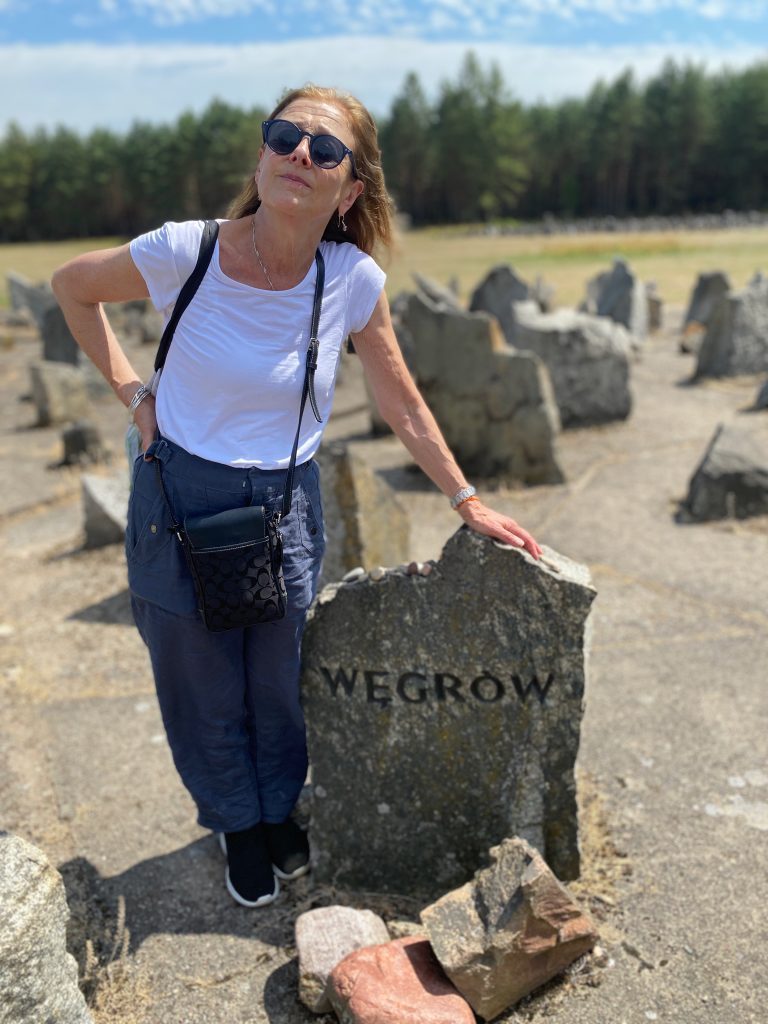

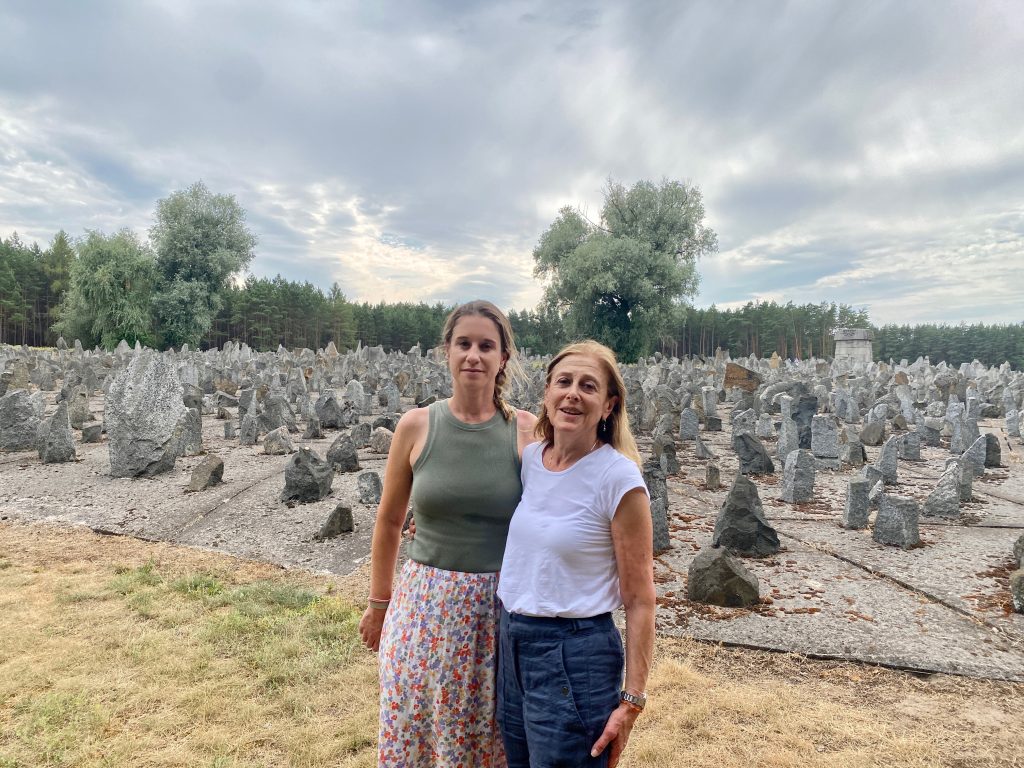

The Warsaw Jewish Ghetto and the Former Jewish Quarter
As many may know, Warsaw was almost entirely destroyed by the Nazis after the Warsaw Uprising in 1944 (while the Soviet Red Army waited across the river). The former Jewish ghetto is now the neighborhood of Muranow, meaning “Rebuilt.” This was a ghetto of 460,000; one-third of Warsaw’s population at the time was Jewish (380,000). Most died of the horrible conditions, suicide, or deportation to Treblinka or Auschwitz.
Around parts of Warsaw, even where our Airbnb was at the edge of the Old Town, there are some markings for where the former ghetto walls stood, but not much is left in the former ghetto today. There are a few segments of the ghetto wall remaining, the former bunker of Mordechai Anielewicz and other Jewish resistance fighters who died there during the Uprising, and adjacent to the impressive POLIN Museum of the History of Polish Jews, the Monument to the Ghetto Heroes (those who died during the Warsaw Ghetto Uprising of 1943).

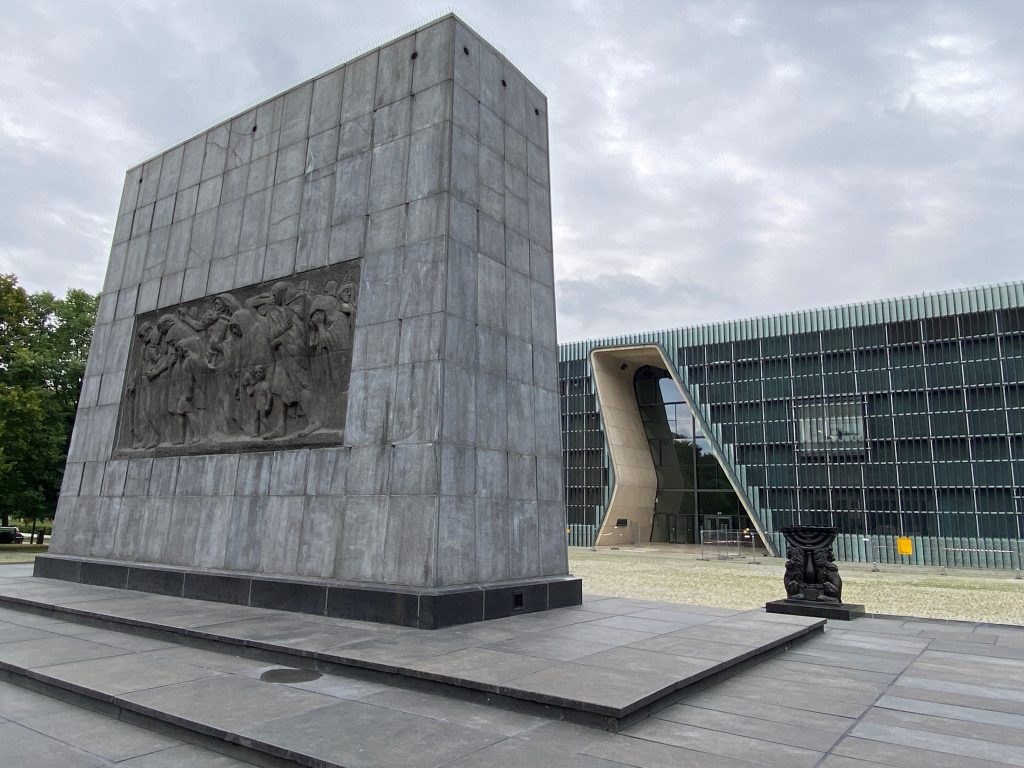
Walking around the former ghettos and camps, trying to envision what life was like, it shifts from an abstract “how could this happen” to “this is how this happened.” Even in the former Warsaw Ghetto and Treblinka, there continue to be very recent archaeological excavations and discoveries; so much of this was repressed, discarded, buried, or built over during the post-war years.
The horrors of the Holocaust are clear. What’s been interesting to both Dave and me in our travels is how different people have remembered it and placed it in historical context. We know family members who vowed never to set foot in Germany and never to buy German products. But through our travels, the accountability in many German sites and museums in more recent years has been candid and remorseful in assessment. At the same time, in other countries like Hungary, Poland, and Lithuania, some museums and sites we’ve visited seem content to blame Germany and the Soviet Union for their roles but take little to no responsibility for their own actions, complicity, willful ignorance, or in some cases, outright collaboration. There’s no conclusion here, but just a recognition that perhaps all we can do now is bear witness, honor and share the memories and testimonials captured from this complicated period, and do what we can to protect the unvarnished history for a future generation.
